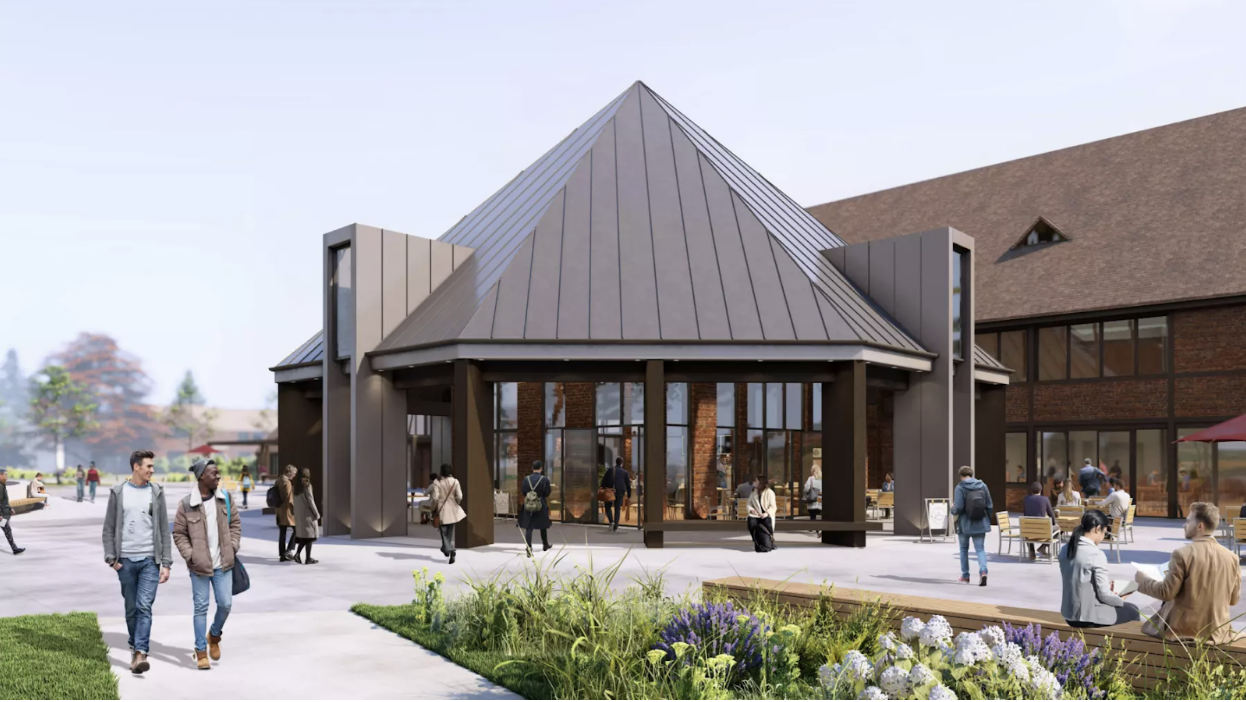
By Lina McDonald and Charlie Cronk
The University of Puget Sound’s “Advancing Excellence” plan was recently released to the Puget Sound community, giving the campus a glimpse into the future of the University. “Advancing Excellence” is the newest addition to the University’s long-standing history of 20-year campus improvement plans. The finished product outlines everything from improvements to existing buildings to efforts to enhance campus sustainability.
In total, 23 members of the campus community were involved in the active design of the plan. Contributors included professors, diversity and equity coordinators and current students. The team, which began meeting in Oct. 2022, finished their draft in Feb. 2024.
During that time, the team met with many student organizations to gain their perspective and gauge what students felt needed to be changed around campus. These groups then worked in conjunction with administrative officers and other working members to bring their ideas to fruition, Associate Vice President for Facilities Bob Kief, the chair of the project, explained.
“We’ve had an outreach to quite a few campus groups. We had focus groups that the architect met with,” Kief said. “There were over 50 total groups. We set up meetings with each individual area and sat down and said, ‘What do you like? What don’t you like?’”
Lexi Brewer, the project’s Director of Sustainability and Energy, highlighted the team’s commitment to student input as one of the key aspects of the planning process. “Outside of the focus groups, there were campus pop-ups for the whole campus community, including several outreach events and follow-ups last year,” Brewer said. These events allowed students and faculty members to give feedback about the proposed changes.
Student feedback overwhelmingly indicated that the community needs more open and accessible areas on campus. The plan addresses this by introducing several “open” campus features, such as a Student Success Center in Howarth Hall and outdoor communal areas between residence halls.
“The indoor/outdoor spaces between the residence halls and outdoors are very popular and people have asked us to get moving on those, which we would love to,” Kief said, referencing student feedback received during the planning process. “We’re pricing those now,” he added. In addition, Kief believes that structural changes to existing buildings, such as the Rasmussen Rotunda, would shift the campus feel away from restrictive architecture towards a more modern, outdoor feel.
Sully Martin (‘27) told The Trail “I am glad to see that there is a plan for the future for the campus and that the school wants to expand.” They also stated “I think the Rotunda looks a little interesting. I currently like the look of it, and I’m worried that this adds a modern, too modern of a look to it compared to the S.U.B..” They also said “I’m worried about Jones Circle and Todd Field, that the more cement and kind of pavement look, I prefer more of a green space. I think grass is always fun, and the more grass, the better.” Sully added, “The conference hall seems interesting. I don’t know if it’s super necessary and if we can focus those funds and time towards improving the current buildings, and improving the campus community.”
Renee Shannon (‘28) explained to The Trail “I do like their idea of adding some outdoor rooms on Todd Field because that seems like a pretty cool idea. It gives places for students and classes to meet outside.” On the proposed changes to Jones Circle, she commented, “I think as a whole, it seems like a good plan. It gets cars out of pedestrian spaces. I’m not sure how the general campus population would react if they took out the fountain there. It’s probably kind of a sentimental thing on campus.”
Another one of the major updates in the plan is the construction of a campus conference center along Union Avenue, in place of the parking lot between Wyatt and Thompson Halls. Currently, the University lacks a larger meeting space for groups, which the planned development could provide. In addition, the center would also serve as a revenue generator and would be open to public use.
The plan also outlines the construction of an underground parking garage underneath the proposed conference center. The City of Tacoma standards mandate that the University must have a certain allotment of designated parking on campus, which the garage would account for.
Other opportunities for revenue generation include restructuring on-campus houses, such as Langlow House, as hospitality for visiting students or others to stay at. Langlow House is historically designated as continued housing for the Honors Program, however, these students would instead have a housing community in Thomas Hall.
Sustainability measures include switching building heating systems from natural gas to geothermal heat pumps or aiming for total electrification. Although the planned buildings will not be completely carbon neutral due to the building materials used, they will cut down on Puget Sound’s long-term carbon footprint.
“Embodied carbon is certainly a concern. That’s the carbon associated with the materials you’re using,” Brewer said. “Because the focus is more on renovating existing buildings than building new buildings, I would expect the carbon footprint to be a bit lower than if we were going entirely with new builds.”
The University follows LEED Silver Standards for all newly constructed buildings, including Harned and Weyerhaeuser Halls. Construction on the two buildings began in 2006 and 2010, respectively. This sustainability-oriented approach will continue with planned buildings as well.Sustainability improvements are all a part of the University’s Climate Action Plan, which “is really looking at decarbonizing the entire campus. That would be residence halls, academic buildings. We’re really going to be deciding between good and best in terms of future systems,” said Brewer, touching on how the buildings will ensure that the renovations are above and beyond current standards.
